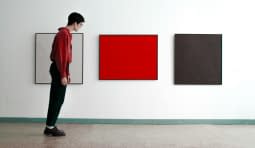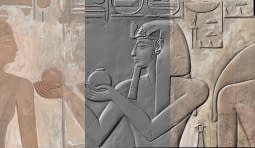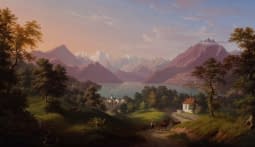Tempera painting as a medium of expression
"Tempera", from the Latin "temperare", means "to mix" and in today's understanding refers to an emulsified mixture of an aqueous and a non-aqueous component. The components of the binder can be very different.
The origin of tempera painting probably goes back to ancient times. Based on a note by Cennino Cennini around 1400, the initial tempera painting used an egg binder, which gave it the name of "pure egg tempera".
Although the tempera painting technique was considered the predominant painting medium and was particularly used in the Middle Ages in Europe, in traditional icon painting and by painters such as Giotto and Botticelli, it gradually faded into the background with the rise of oil painting and its technical optimisation. While initially in the 14th century it was still a mixed technique made from tempera and oil, which was used by painters such as Leonardo da Vinci and his pupils or also Jan van Eyck, it was soon completely replaced by oil. Michelangelo, for example, painted mainly with oil. However, in the High Renaissance it was still used as an undercoat for oil paintings or in incarnate painting.
It is not easy to paint with tempera. It needs a good technical understanding and painting experience. It was not without reason that pure egg tempera was replaced by oil. One factor was certainly the short durability. In addition, canvases were increasingly preferred as picture carriers over the traditional wooden panels. Compared to oil paint, tempera paint also does not have deep colour saturation. Although it dries faster than oil, it sometimes takes several fine layers of paint until it becomes opaque. Thus, it must be applied with short, small strokes and in several layers.
However, tempera painting is very versatile in its application. Under today's understanding of tempera, different binders can be mixed. Egg, linseed oil, water or resins (e.g. dammar, mastic) are suitable for homemade emulsions. Depending on the requirements, glazed or pasty, matt or glossy colour applications can be created. A distinction is made between "lean" tempera (meaning with more water) and "fat" tempera (meaning with more oil).
A white-coloured base gives the tempera paint a higher luminosity and causes the colours to stand out better. A light, firm and lean-bound ground, such as a chalk ground, is therefore best suited.
Those who wish to achieve even more luminosity should grind the tempera paint themselves. Meanwhile, the finest grated, unbound colour pigments exist in the market that can be used for this purpose. A large selection of high-quality pigments can be found, for example, at the company Kremer Pigmente.
Have fun with your artistic creations!








